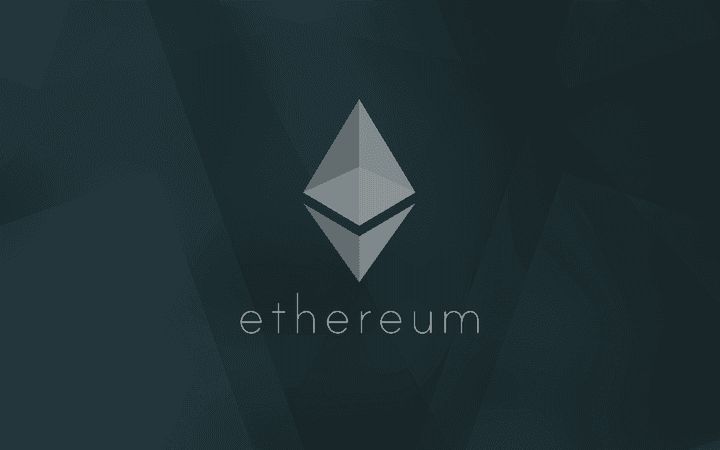Like almost any cryptocurrency in the market, Ethereum was making headlines at the end of 2017 with its explosive annual growth in ETH/USD of around 10,000%. Although things have changed radically since then, many still expect Ether to “go to the moon.” But is it a realistic expectation?
Where We Stand Now
Ethereum co-founder Vitalik Buterin says the heady days of “1,000x price increases” are over for the cryptocurrency market. Following this assumption, cryptocurrency should be traded less like a speculative investment but heading to real-world adoption and usage.
If you are shopping for insurance, booking travel, gaming, buying entertainment tickets, or tracking and shipping products using the Ethereum blockchain, you know that many transactions in Ether represent productive economic activity.
The Ethereum blockchain hosts over 3,000 dApps running decentralized marketplaces across all industry sectors. While transaction volume is still relatively low in this microcosm of the real economy, Ethereum wallet usage is rapidly growing as more businesses and consumers make transactions in ETH.
However, like other cryptocurrencies, the ETH price is influenced by the volatility of Bitcoin as the bellwether currency that is subject to the whims of the speculators. In other words, the high spike in cryptocurrency prices in December and January was not the new normal.
The run-up was driven by the rush of mainstream investors into the exciting new world of cryptocurrencies. As the novelty fades, Buterin says valuations should reflect fundamentals.
Since more of ETH’s transaction volume comes from productive activity including payment transactions and rewards in its growing universe of dApps, investors should evaluate the fundamentals driving transaction activity. Following are four factors related to “actual usage” that should be considered when valuing Ether.
1. Transaction Volume
The number of transactions processed on the Ethereum network is one of the most important metrics in the crypto economy. As noted, most Bitcoin transactions reflect speculative trading whereas more commercial transactions are being made in Ether.
An exception was the bull run-up in December and January when ETH transactions jumped from 500,000 to 1.25 million on mostly speculative trading activity. Daily transaction volume is now fluctuating around a more moderate 600,000.
As the blockchain marketplaces based on the Ethereum token standard (ECR-20) grow, the percentage of commercial transaction volume is increasing.
2. Ethereum Wallets
The real driver of ETH growth is getting consumers to open up their virtual wallets. In 2018, the number of Ethereum wallets used to store, send and receive ETH jumped 2.3 times to 42.5 million unique addresses by September.
While the daily addition of Ethereum wallets, currently about 50,000, fluctuates greatly, the positive growth trend in shoppers spending Ether is strong.
The monthly compound growth rate in Ethereum wallets is 11 percent to date in 2018, doubling the monthly growth of 5.5 percent in 2017.
The number of wallets opened is actually higher, but those never used in transactions do not appear in the figures. These non-spenders will help sustain the positive growth when they do open their wallets and start paying for goods and services in ETH.
Meanwhile, dApps from real estate markets to solar energy for the home are providing attractive incentives and rewards to encourage consumers to spend Ether instead of fiat currencies. The low to no transaction fees on decentralized marketplaces provide further savings.
3. dApps Growth
Although Ethereum has a clear lead, the dApps race is heating up. The number of dApps on the Ethereum network ultimately determines the transaction volume. Since not all of the over 3,000 dApps will succeed (about half are live), this should be used as a rough gauge of the popularity of the platform.
This metric is becoming more relevant, though, as new blockchain competitors to Ethereum enter the market on a regular basis. These rivals plan on improving the transaction speed and volume of the leading blockchain for dApps. Some Ethereum dApps seeking higher performance have already migrated to other blockchains.
The Ethereum network, which has a clear first-mover advantage, is planning its own upgrades to speed and scalability. But technological advances can upend any market and make it anyone’s game to win.
4. Mining Difficulty
Ethereum’s summer price slide continued into the early September. Hashing power slid alongside the price.
When the Ethereum price is high, miners have an incentive to mine more of it. When prices are low, mining activity may slow and miners will horde Ether waiting for prices to rise before selling it.
The hash rate – the time it takes to solve a cryptographic math problem and verify a transaction – increases with GPU power. To slow the rate of the difficulty of solving these puzzles and ensure a steady supply of Ethereum, Ethereum developers have recently agreed to change the number of Ether produced per block to two from three.
To Sum It Up
The influence of other leading indicators should not be ignored as well. For instance, the correlation between the price of BTC and ETH is tightening, narrowing to 0.81 over the last three months from 0.70 over the past year.
The bellwether cryptocurrency reflects the sentiment of the market towards the cryptocurrency market in general. As a sentiment indicator, it has growing influence over other virtual coins.
Fundamentals though should be given the most weight when valuing long-term investments in Ether. Valuing stocks provides an instructive analogy. Stocks of companies with strong fundamentals have historically performed better than the rest.







